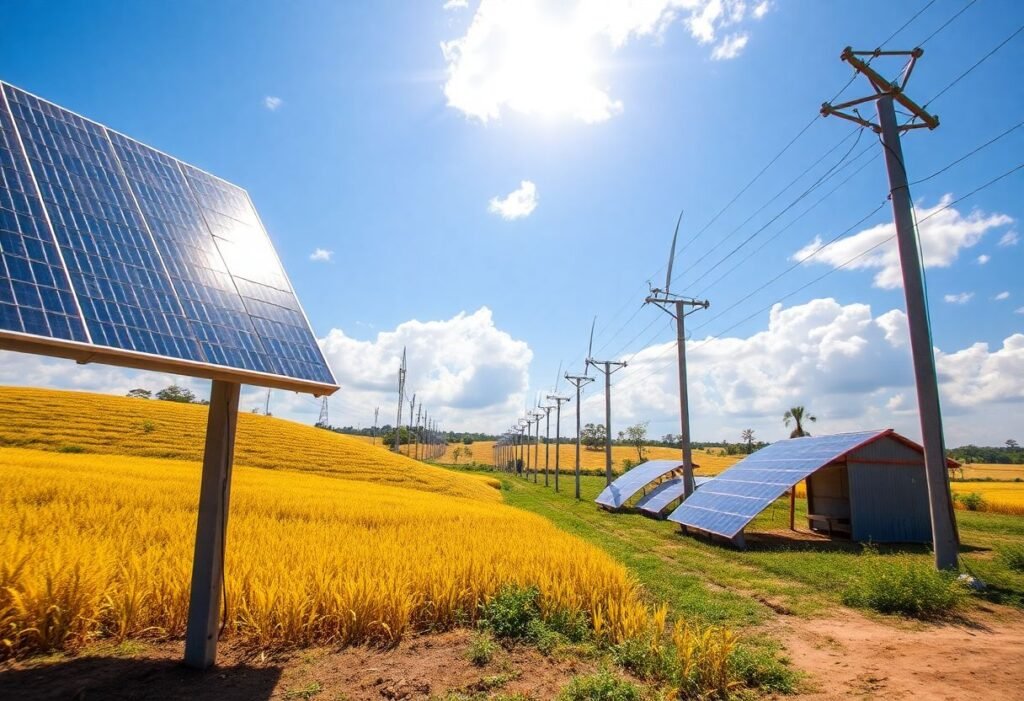The transition to renewable energy is not just an environmental necessity; it is a revolutionary movement that is fundamentally enhancing rural electrification. This shift towards sustainable energy sources is a vital aspect of innovation, providing an opportunity for rural areas to access reliable electricity, which in turn can boost local economies and improve quality of life.
Transformative Impact of Renewable Energy on Rural Communities
Renewable energy technologies, particularly solar and wind, are transforming rural electrification by providing off-grid solutions. Many rural communities are often excluded from traditional energy grids, making renewable sources an attractive option. By harnessing solar power, communities can generate electricity locally, which not only reduces dependency on fossil fuels but also cuts down transmission losses. With innovations in technology, solar panels are becoming more efficient and affordable, enabling widespread adoption across rural areas that previously relied on kerosene or wood for lighting and cooking. The proliferation of renewable energy systems holds the promise to create sustainable solutions for energy needs in the tails of innovation.
Innovative Technologies Driving Rural Electrification
The development of new technologies plays a crucial role in enhancing rural electrification. Innovations like smart grids and energy storage systems enable communities to optimize the use of renewable energy. Smart grids allow for real-time monitoring and management of energy distribution, ensuring that energy is used efficiently and reducing waste. Additionally, advancements in battery technology are crucial, as they allow for energy storage and usage during periods without sunlight or wind. These innovations are critical for providing a reliable energy supply and increasing the resilience of rural communities.
Economic Opportunities through Renewable Energy
By investing in renewable energy, rural communities are not only gaining access to electricity but are also creating new economic opportunities. The establishment of solar farms or wind turbines generates jobs in installation, maintenance, and operation. Moreover, access to electricity opens up opportunities for local businesses to thrive, as they can operate more effectively during longer hours with reliable power. Studies have shown that renewable energy can lift communities out of poverty by providing not just energy but also pathways to sustainable economic growth.
Community Engagement and Empowerment
Community involvement is vital in the successful adoption of renewable energy systems in rural areas. Local engagement ensures that the systems installed meet the specific needs of the communities. Empowered communities can take initiative and develop localized solutions, enhancing their self-sufficiency and reducing reliance on external support. Programs that educate and involve communities promote innovation and entrepreneurship, aiding in the successful implementation of renewable energy projects.
Policy and Investment Landscape
For renewable energy to significantly advance rural electrification, supportive policies and investments are needed. Governments and non-governmental organizations are providing incentives and funding to stimulate the adoption of renewable technologies. Policies that promote clean energy investments are essential to reducing financial barriers. Through grants, subsidies, and tax incentives, rural communities gain access to necessary capital to build infrastructure for renewable energy, paving the way for sustainable electrification.
Looking Ahead: The Future of Rural Electrification
The future of rural electrification through innovative renewable energy solutions looks promising. Continued advancements in renewable technology will further decrease costs and increase efficiencies, making these solutions accessible to an even broader audience. Furthermore, as the world shifts towards sustainability, rural areas can play a critical role in the global energy landscape. By embracing innovation, rural communities can not only improve their living conditions but also contribute significantly towards addressing climate change.





















